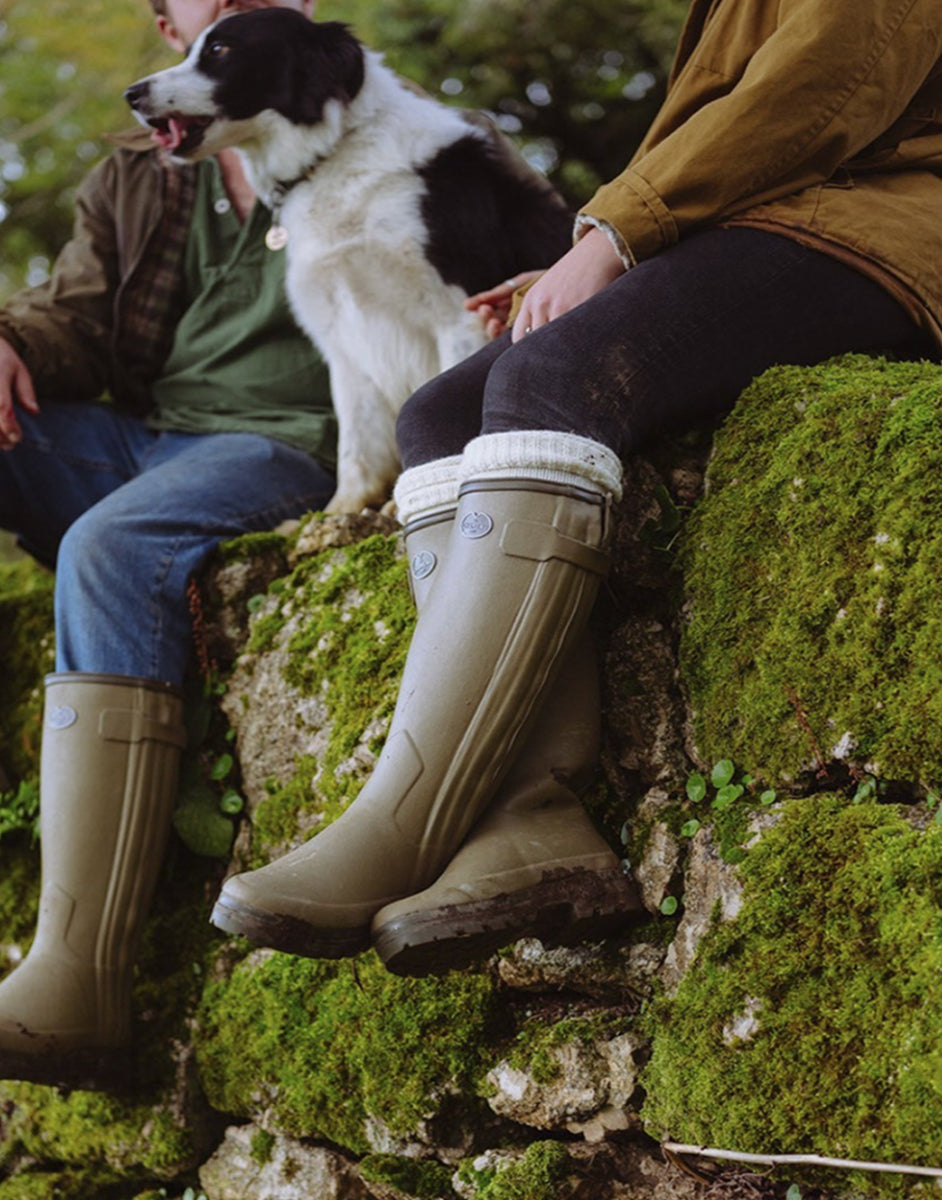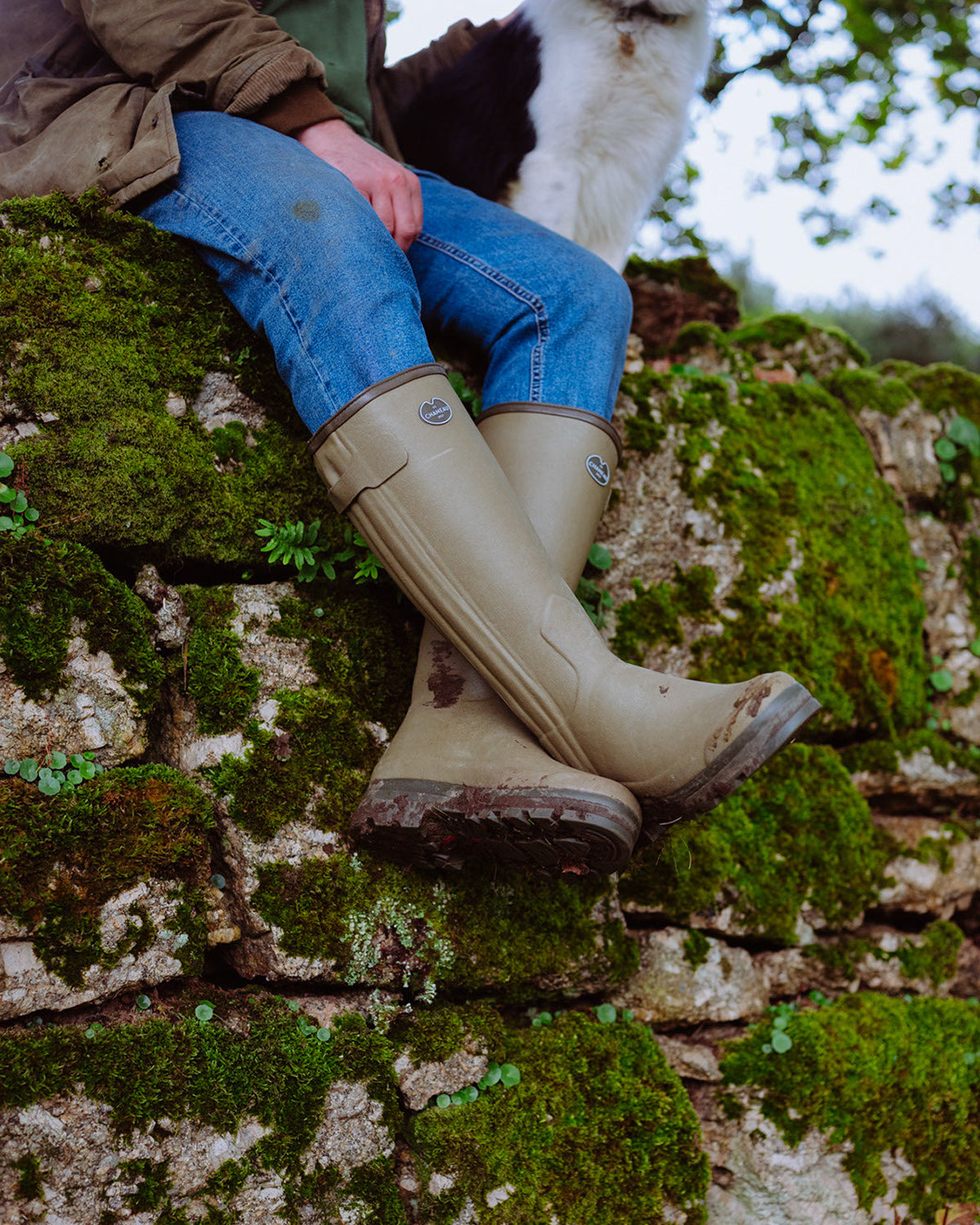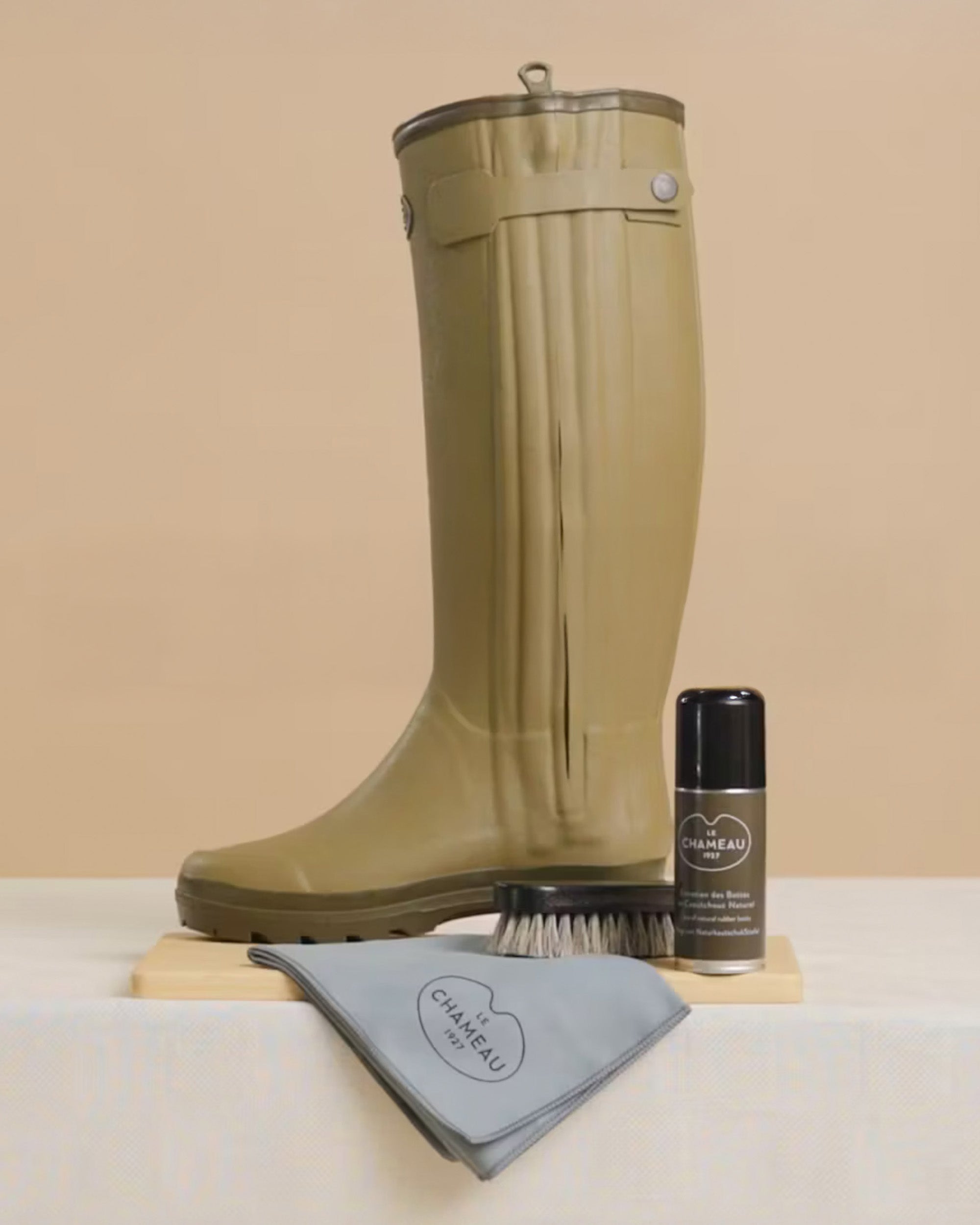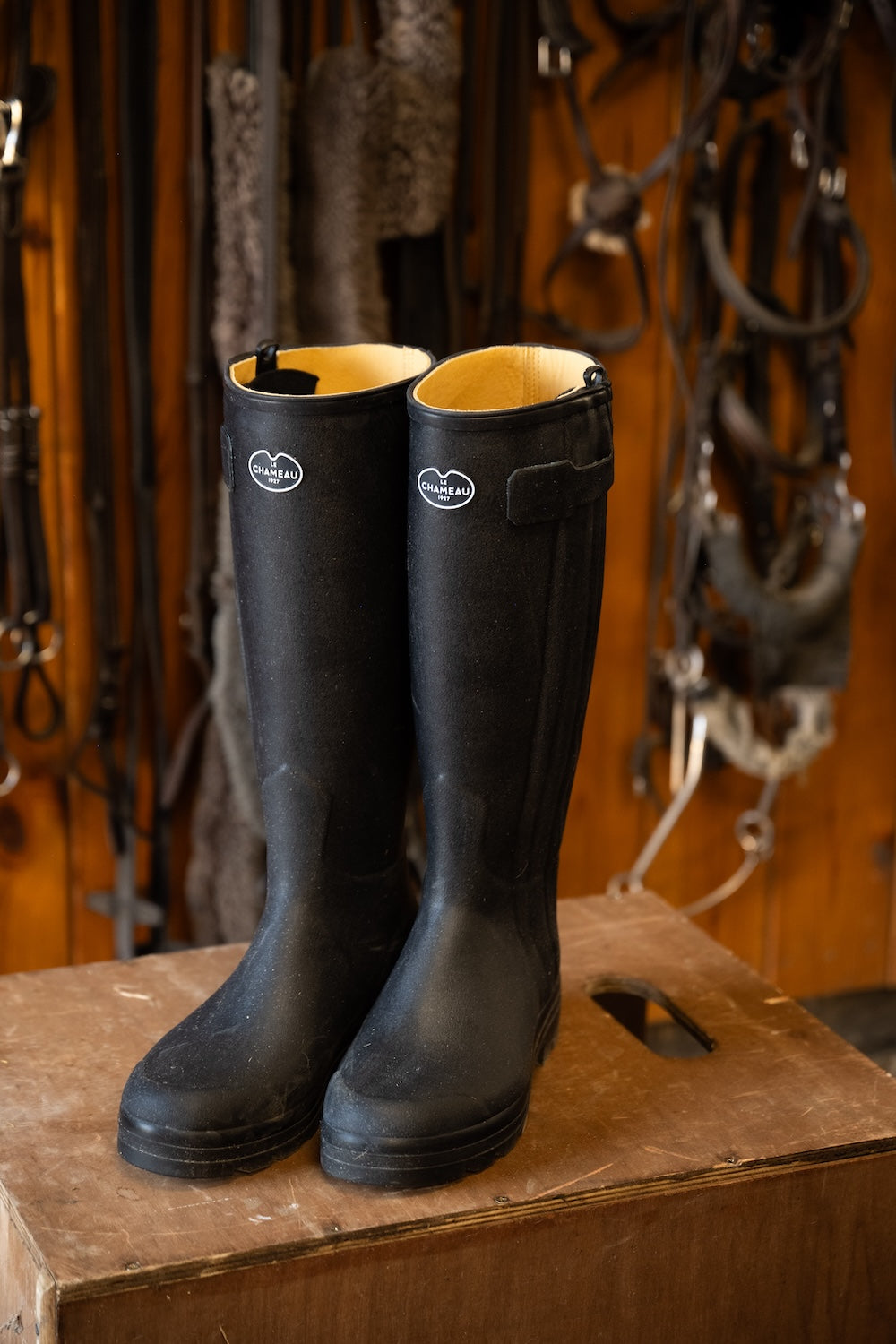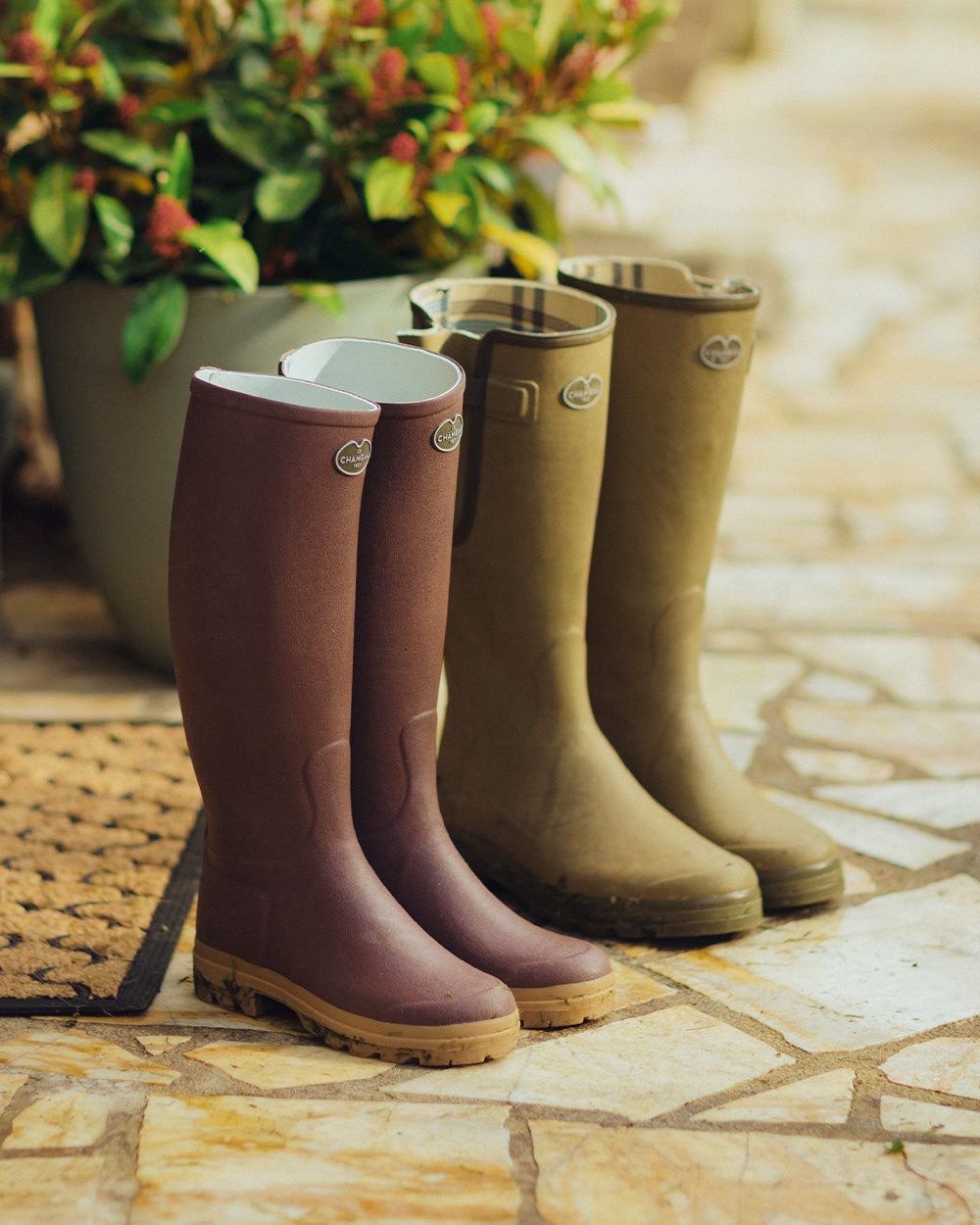The Art of Bootmaking
MASTER BOOKMAKERS SINCE 1927
In 1927, in a seaside village in Normandy, France, Claude Chamot had a desire to create the most comfortable and best-fitting rubber boots. He had listened to farmers, hunters and fishermen who all yearned for boots that would withstand the rigours of their respective activities. Now, almost 100 years later, Monsieur Chamot’s vision continues. Heritage and history imbues each and every pair of Le Chameau boots that pass through the hands of time-served craftsmen.
THE LE CHAMEAU RUBBER
Like any natural product, the quality of rubber is determined by how it is produced. Our rubber is sourced from Vietnam, where we have been working with the same highly regarded plantation since 2005. A number of factors determine the quality of the rubber, including season (spring rubber is best), climate purity, and tree quality. To produce the rubber, each Pará rubber tree is “tapped”, producing raw latex, a milky white substance. Properly harvested, this can be done without harming the trees. The liquid latex is allowed to coagulate and can then be collected and processed into its dry form which is packed into loaves. The loaves are graded from A to D – the grading determined by colour, purity and stickiness. Le Chameau uses only Grade A rubber, which is light coloured and has low ash and dirt content. These loaves of raw Grade A rubber are then shipped to our workshop.
CLAUDE CHAMOT'S SECRET RECIPE
Once the loaves arrive at our workshop, we add a few secret ingredients to produce our famously supple Chamolux rubber. This recipe is still based on Claude Chamot’s original mix, producing soft, supple and durable rubber which forms the basis of all our boots.
OUR PEOPLE
The most critical element in our bootmaking process is our people. We are proud to have several generations of Maître bottiers in our Le Chameau family, a highly technical role which requires upwards of nine months of intensive training. We take great pride in setting the standards for the production of handmade rubber boots.
PREPARING THE RUBBER
With our rubber loaves ready, our special recipe is then mixed into the raw rubber and rolled around large metal rollers. Like a giant pasta machine, the rollers turn, producing first a thick slab, which is then cut and fed into the next roller, until the specific thickness required emerges from the final roller – thick enough to have an integral strength, but thin enough for each Maître bottier to manipulate. Using carefully crafted pattern templates, the rubber is cut to shape and hand trimmed.
TAKING SHAPE - OUR FORMS
With the rubber now in a soft, thin and malleable state, it can be used by a maître bottier to cover a last – an aluminium boot-shaped mould. Layer upon layer is sandwiched together with liquid latex, producing an ever stronger and more stable construction. It is at this stage that the different models of boot can be adapted. For our Chasseur and Saint Hubert, for example, we melt aramid fibres into our rubber, giving additional reinforcement for extra protection.
BUILDING THE SOLE
We have a number of different sole variants, each with a slightly different build process. Across all variants, the base sole is made by adding the formula of rubber to the bottom of a two-part mould. The mould is closed, put under pressure and cooked. As the rubber heats and spreads through the mould, it forms the shape of the sole. Different elements are then added to this process, depending on the style. That might be shank reinforcement, as featured on our Chasseur and Vierzon, or the self-cleaning sole found on our Cérès, which was designed for agricultural professionals in partnership with leading tyre manufacturer Michelin.
